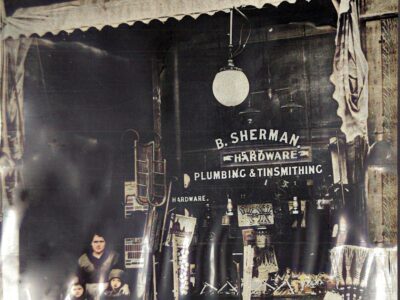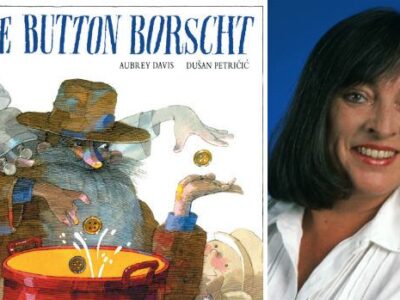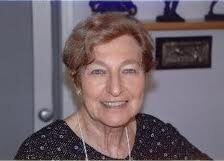Nomi Eve, author of The Family Orchard, has taken sections of her family history, as supplied to her by her father, a genealogist, and used them as the foundation for a novel that spans two centuries and the familiar Jewish terrain from Eastern Europe to the land of Israel. As she advises, references to actual localities…
Tag: 19th-century
Mary Antin’s The Promised Land
by •
Mary Antin, born in the Lithuanian (now Belarussian) town of Polotsk in 1881, recorded her memoirs of the Old Country and of coming to America in The Promised Land, a book first published in 1911. The Promised Land is a valuable first-person account of the myriad concerns and experiences surrounding the journey from the squalid…
Radiant Days, Haunted Nights: Yiddish Tales
by •
Radiant Days, Haunted Nights: Great Tales from the Treasury of Yiddish Folk Literature (Overlook Press) presents an intriguing collection of obscure Yiddish folk tales, translated for the first time by Joachim Neugroschel and spanning more than four centuries. The collection begins with the midrashic “Song of Isaac,” written by an anonymous author about 1510, and concludes…
‘The Dickens of the Jewish world’
by •
As if paying respects to a beloved head of state, a vast crowd exceeding 100,000 in number lined the route of the funeral procession for Sholom Aleichem when he died at age 57 in New York City in May 1916, just over 80 years ago. Among Yiddish writers, Sholem Aleichem ranked among the three most…
Journey to a 19th-century shtetl
by •
Back about a century and a half ago, the town of Kamenets was a typical Russian-Polish shtetl consisting “of 250 old houses, black and small with shingled roofs,” and with some 450 Jews listed in the Revizski Skazki, the official government registry. However, most of the town’s Jews did not appear in the registry. Fearful…
The Origin of Ivanhoe’s Rebecca
by •
Scottish novelist Walter Scott’s portraits of the Jew Isaac of York and his daughter Rebecca in his classic medieval romance Ivanhoe (1819) provides English literature with its strongest positive counterbalance to the stereotypical conception of the Jew as a dark misanthropic being along the lines of Shakespeare’s Shylock. Thackeray, who grew up with Ivanhoe, described…
The model for Proust’s dandified Swann
by •
Swan’s Way, a book by French author Henri Raczymow that has been recently released in English translation (Northwestern University Press), is a probing literary inquiry into the once-celebrated Jewish dandy in late 19th-century French society upon whom writer Marcel Proust modeled Charles Swann, a major character in his famous novel Remembrance of Things Past. Raczymow,…
God and the American Writer
by •
American literary critic Alfred Kazin spoke at the International Festival of Authors on the subject of his latest book, God and the American Writer (Knopf, 1997) — namely, the supreme relevance of God to public discourse in America in the last century, versus God’s supreme irrelevance to public discourse today. Whether they were believers or not,…
All Other Nights is Horn’s best yet
by •
Dara Horn’s third novel combines her trademark cleverness, depth of Jewish knowledge, and strong literary sensibility into a fast-paced adventure-intrigue in which Jewish characters make a significant difference in the American Civil War. Jacob Rappaport, the 19-year-old son of a New York industrialist, joins the Union Army rather than accept the poor match his father,…
On Jewish Memoirs and Autobiography
by •
On the several occasions when I’ve enrolled in creative-writing or memoir-writing workshops, usually with the aim of finishing a particular story that I’ve written, I’ve always been struck by the wealth of literary talent seated around the table. This has generally come as a pleasant surprise, since I’ve also observed that few people possess the…






